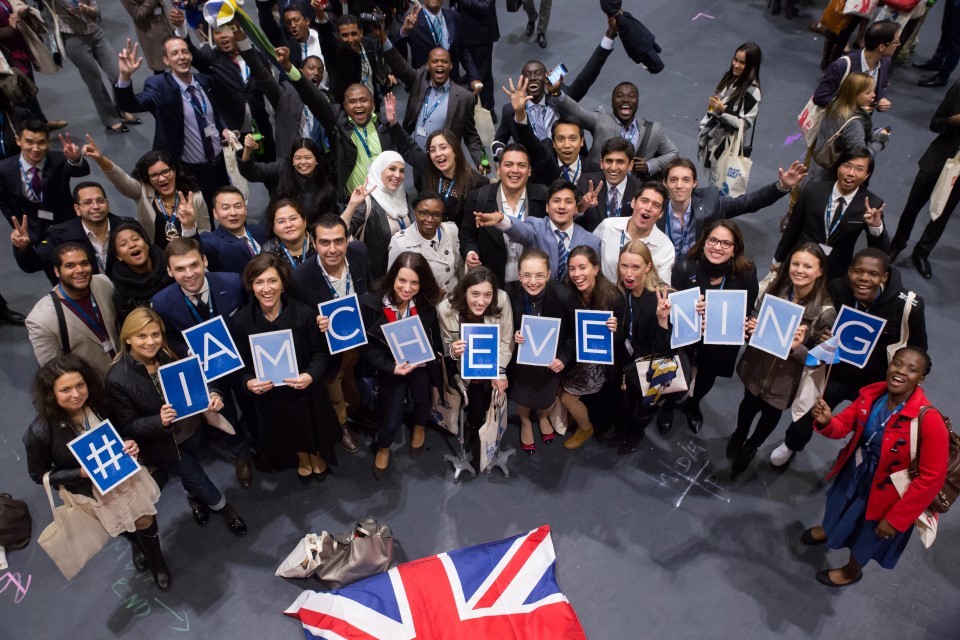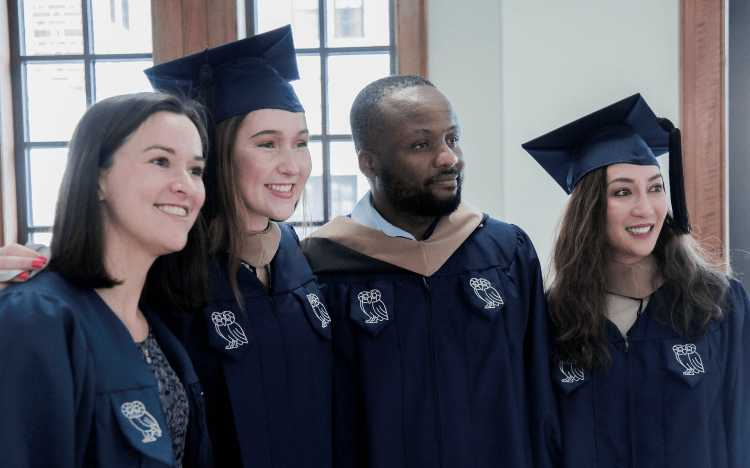“Paradise is not a place — it’s a feeling. And in 2025, these hidden paradises promise that feeling, in absolute luxury.”
You love luxury travel. You want places off the beaten path. You want privacy, exclusivity, stunning nature, and unique experiences.
This post gives you 15 hidden-gem destinations that even many “luxury travelers” haven’t heard of. These are not overrun resorts, but places you can truly feel exclusive.

I’ll also include tips, comparisons, and actionable ideas so you can plan your next bucket list trip.
Why “Hidden Paradise Destinations” Matter Now
Luxury travel is shifting. Gone are the days when staying at a five-star hotel in Paris was enough. In 2025, discerning travelers demand:
- Exclusivity & Privacy
- Authenticity & Cultural immersion
- Sustainability & responsible tourism
- Unique landscapes, away from crowds
- Luxury amenities + meaningful experiences
Many of the big names (Bali, Santorini, Maldives) are saturated, overpriced, and crowded. The real value lies in the overlooked places — those with potential, but still under the radar.
Travel publications are now spotlighting off-the-beaten-path luxury escapes for 2025. (Luxury Travel Magazine) These are the kinds of destinations you want on your radar now — before the crowds catch on.
Because often, by the time everyone’s talking about it, it’s no longer “hidden.”
How I Selected These 15 Destinations
Before we dive in, here’s a quick look at my selection criteria:
| Criteria | What It Means | Why It Matters |
|---|---|---|
| Seclusion / off the radar | Places few have visited or are just emerging | You avoid mass tourism and get authenticity |
| Luxury infrastructure | High-end resorts, boutique hotels, private villas | You don’t have to sacrifice comfort |
| Unique natural or cultural features | Unusual landscapes, distinct traditions | Gives you “wow” moments you won’t forget |
| Sustainability / local benefit | Supporting local communities, eco practices | Makes your travel responsible |
| Growth potential | Rising, but not yet saturated | You can get ahead of trends |
I then cross-checked travel and luxury sources (e.g. Luxury Travel Magazine, Modern Luxury’s 2025 Best Destinations) to verify these places are gaining buzz. (Luxury Travel Magazine)
Top 15 Hidden Paradise Destinations for Luxury Travelers in 2025
Here they are. Each is a jewel. For each, I’ll cover:
- What makes it special
- Where to stay & how to get there
- Best times to visit & what to do
1. Sumba, Indonesia (NIHI Sumba & surroundings)
Why it’s hidden luxury gold
NIHI Sumba is remote, wild, and soul-stirring. It’s not just the white sand beaches — parts of the island are rugged, horse country, remote valleys, and forested hills. (Wikipedia)
You feel separated from the world — in the best possible way.
Where to stay & get there
- The landmark is NIHI Sumba resort (27 villas across hundreds of jungled acres) (Wikipedia)
- You fly into Tambolaka (SMU) or Waingapu (WGP), then arrange a private land transfer
- Some itinerary setups include charter flights or seaplanes
What to do & when to go
- Go during dry season (April–October)
- Activities: horse therapy on the beach, rainforest trekking, local village visits, spa and wellness, snorkeling
- You can stay for extended periods — the resort encourages slow travel
2. Kep & Kep Merli, Cambodia / Cambodia’s coast
Why it’s a whisper among insiders
Kep was once overshadowed by Cambodia’s big names. But now, resorts like Kep Merli offer secluded luxury along the Ionian-style Cambodian coast. (Carra Luxe)
You won’t see huge crowds, but you’ll get palm-fringed beaches, boutique villas, and local charm.
How to access & lodging
- Fly to Phnom Penh or Sihanoukville, then road or private transfer to Kep
- Stay at Kep Merli or boutique seaside villas
- Combine with Phnom Penh or Siem Reap in a multi-leg trip
Highlights & best visit time
- Best time: November to March (dry, cooler)
- Do: private cooking classes, beach picnics, boat tours, mangrove exploration
- Enjoy outstanding seafood straight from fishermen
3. AlUla & AlUla desert oasis, Saudi Arabia
Why it’s new and captivating
AlUla is a rising star. Think sweeping desert valleys, rock-cut architecture, starry nights, and exclusive resorts that lean into heritage and luxury. (Carra Luxe)
It’s not yet mainstream for ultra-luxury travelers — that makes it exciting.
Where to stay & reach
- Lodging: boutique desert camps, high-end resorts, eco-luxury lodges
- Fly to AlUla International Airport (ULH)
- Transfers on well-curated routes through desert landscapes
What to experience & ideal season
- Best season: October–March (cool evenings)
- Experiences: guided desert treks, archaeology tours, astral nights (stargazing), immersive cultural heritage
- You can stay in well-appointed camps with high comfort, yet feel primitive outdoors
4. Sindalah Island, Saudi Arabia (Neom region)
Why it’s cutting edge
Sindalah is a brand-new luxury island destination birthed in the Neom project. Think pristine beaches, futuristic design, and exclusivity. (Wikipedia)
It’s not just remote — it’s purposeful, built for a bold luxury future.
Access & lodging
- As the island is being launched (2024–2025), the first luxury resorts are opening
- You’ll fly into the region (Neom / Tabuk) then transfer by sea or air
- Expect world-class villas, yacht marinas, wellness centers
Best time & activities
- Best: fall through spring (avoid Saudi summer heat)
- Activities: luxury yachting, private beach days, spa & wellness, sea sports, curated nature walks
5. Bawah Reserve, Indonesia
Why secret is luxury
Bawah Reserve is a remote island cluster accessible only by seaplane. Limited guest numbers. Focus on conservation, wellness, and immersion. (Mentioned in Modern Luxury’s 2025 Best of Luxury Travel) (Modern Luxury)
If you want to step out of normal hotel life entirely, this is it.
Getting there & stay
- Fly into Singapore or Jakarta, connect to remote airstrip or seaplane
- Stay at bespoke ecoluxury villas across lagoons and jungle
Best season & what to do
- Best time: April–October
- Activities: snorkeling, reef walks, rainforest treks, wellness, lagoon kayaking, private picnics
6. Bhutan (inner valleys, beyond Thimphu & Paro)
Why Bhutan is a spiritual luxury gem
Bhutan is no secret, but most tourists hit the same few spots. The hidden corners — remote valleys, high passes, lesser-known dzongs (fortresses) — remain blissfully calm. Exquisite lodges and immersive local guides make it high luxury. (Jetset)
It’s spiritual, pristine, and deeply cultural.
How to reach & stay
- Fly into Paro International Airport (PBH)
- From there, travel by road into remote valleys
- Stay at boutique lodges or high-end resort clusters (e.g. Amankora in multiple valleys)
Best time & what to see
- Best: March–May, September–November
- Do: trek to Tiger’s Nest, walk remote trails, local festivals, monastery visits, meditation retreats
7. Patagonia, Chile / Argentina (remote lodges)
Why it whispers instead of shouts
Patagonia is known for raw grandeur. But the hidden part is staying at ultra-luxury lodges deep in the wild, without crowds — glacier views, fjords, wild peaks. (Jetset)
You’ll feel nature’s power, but in comfort.
Access & lodging
- Fly into Punta Arenas (Chile) or El Calafate / Ushuaia (Argentina)
- Then move internally by charter flights, 4×4 drives, boat transfers
- Stay at premium eco lodges (e.g. Explora) with full services
Best time & activities
- Best: December to March (summer season)
- Do: glacier hiking, backcountry treks, wildlife spotting, fjord cruises, photography
- Some lodges offer wellness, wine pairing, private adventures
8. Isle of Vis, Croatia (remote Adriatic escape)
Why Vis stands apart
Vis was a restricted military zone until late 20th century. It’s still the least visited Croatian island. Quiet bays, vineyards, old villages, untouched beaches. (The Scottish Sun)
For you, it’s more about peaceful discovery than showy luxury.
How to get there & where to stay
- Ferry from Split (or small private boat)
- Boutique villas, converted stone houses, boutique hotels
- Some properties hide in the hills with sea views
Best season & what to do
- Best: May–June or September (shoulder seasons)
- Do: cave tours (Blue Cave), hiking, local wine tastings, strolling fishing villages, secluded beach days
9. Lombok & Lesser Sunda Islands, Indonesia
Why it’s rising but still hidden
When Bali gets crowded, Lombok is the quieter adjacent option. Also newer islands in the Lesser Sundas are getting boutique luxury projects. (Luxury Travel Magazine)
You get beaches, volcanoes, reefs, jungles — quietly.
Access & lodging
- Fly into Lombok International (LOP)
- Or take boat connections from Bali
- Stay at high-end boutique resorts on Lombok, or private island villas
Best time & highlights
- Best: May–September
- Do: surf hidden breaks, trek Mount Rinjani, island hop, dive reefs, beach picnics
10. Zanzibar’s underexplored islets
Why Zanzibar still hides secrets
Most travelers know Stone Town and main beaches. But the little islets off the coast (like Mnemba, Matemwe) still maintain exclusivity. Private villas, coral reefs, quiet sands.
How to go & where to stay
- Fly to Zanzibar (ZNZ), then speedboat to islets
- Private villa resorts or eco lodges
- Some offer full staff and boat access
Best time & what to do
- Best: June–October
- Do: snorkeling, diving, dhow cruises, local spice tours, private beach days
11. Kep & Kep Islands, Cambodia (again, for islands)
I group this separately because Cambodia also has Kep’s offshore islets — quiet beaches, private beach huts, undeveloped coastline. If you stay in Kep, you can island hop to undiscovered shores.
12. Albania’s Ionian coast: Sarandë / Dhermi / Ksamil
Why Albania is a fast gem
Albania is still underappreciated in Europe. The Ionian coast has dramatic cliffs, hidden coves, turquoise water, and boutique stays that rival Greek islands — without the price tag. (The Times)
Access & accommodation
- Fly to Tirana International Airport (TIA), then drive southwest
- Local boutique villas, cliffside resorts, luxury guesthouses
- Some resorts run “entry by reservation only” to maintain exclusivity (The Times)
Best time & what to see
- Best: May–June, September
- Do: private boat tours, hidden beach swims, cliffside dinners, vineyard stops
13. Patmos & smaller Greek isles off the radar
While Santorini and Mykonos are saturated, there are dozens of quieter isles — Patmos, Lipsi, Kalymnos — that still combine Greek charm with tranquility.
You can charter a private yacht, stay in boutique villas, and island-hop in solitude.
14. Remote Fiji & Lau Islands
Major resorts exist in Fiji, but the outer Lau island chain is underdeveloped and ultra secluded. Pure ocean, coral reefs, village life, remote luxury bungalows.
For you, that means real escape.
15. Costa Rica’s hidden coasts & islands
Costa Rica is well known, but many of its coasts (Golfo Dulce, Osa Peninsula, Caño Island) remain hidden. You can stay in jungle-meets-ocean lodges, with privacy, wildlife, and adventure.
Comparison: Quick Snapshot of These 15
Here’s a table comparing key metrics to help you pick your next trip:
| Destination | Best Season | Access Difficulty | Signature Experience | Luxury Style |
|---|---|---|---|---|
| Sumba, Indonesia | Apr–Oct | Medium (flights + land) | Remote beaches + wellness | Eco-luxury resort |
| Kep (Cambodia) | Nov–Mar | Low to Medium | Coastal tranquility | Boutique villas |
| AlUla, Saudi | Oct–Mar | Medium | Desert heritage & stars | Desert lodges |
| Sindalah (Neom) | Fall–Spring | Medium | Island futurism | Ultra-modern villas |
| Bawah Reserve | Apr–Oct | High | Lagoon immersion | Ecovilla hideaways |
| Bhutan (remote valleys) | Mar–May, Sep–Nov | Medium | Spiritual treks | Boutique lodges |
| Patagonia | Dec–Mar | High | Glacial wilds | Wilderness lodges |
| Vis, Croatia | Jun–Sep | Low to Medium | Quiet Adriatic charm | Boutique villas |
| Lombok / Lesser Sundas | May–Sep | Low | Island diversity | Boutique resorts |
| Zanzibar islets | Jun–Oct | Low to Medium | Coral & dhow days | Private villas |
| Albania Ionian | May–Jun, Sep | Low | Untouched coast | Cliffside boutique |
| Greek hidden isles | May–Oct | Low | Island solitude | Yacht + boutique stays |
| Lau Islands, Fiji | Apr–Oct | High | Pure tropical escape | Remote bungalows |
| Costa Rica hidden coasts | Dec–Apr | Medium | Jungle + ocean | Jungle lodges |
| Cambodia islets | Nov–Mar | Medium | Beach privacy | Eco beach huts |
How to Choose the Right Hidden Paradise For You
You might be wondering: which one should I pick first? That depends on your preferences. Ask yourself:
- How remote do you want to be?
Do you prefer some infrastructure nearby, or full wilderness? - Preferred climate or season?
Want tropical heat? Or cooler highlands? - Travel comfort / ease vs adventure
Are you okay with multi-leg transfers, rough roads, seaplane hops? - Cultural interest vs nature focus
Do you want local culture, heritage, food — or wild nature, forests, reefs?
Once you answer that, match your profile with the table above.
Planning Tips: How to Travel to Hidden Luxury Spots & Maximize Your Experience
Here are actionable strategies to help you pull off a trip to these offbeat paradises:
✅ Book well in advance
Because many properties are small, with limited rooms. Being among the first to book helps you get the best options.
✅ Use trusted local luxury tour operators
Local partners know hidden roads, customs, and how to make logistics seamless.
✅ Be flexible on arrival
Some flights or transfers change due to weather. Build buffer days.
✅ Pack smart
Include outdoor gear, but also upscale casuals — some places mix rugged and refined.
✅ Prioritize experiences
Don’t just sleep in a villa. Plan a local immersion — a cooking class, village walk, guided nature trek.
✅ Respect local culture & environment
Hidden paradises stay hidden when locals are respected, nature is preserved.
✅ Travel insurance & contingency
For remote places, medical or logistical flexibility is key.
Keywords to Use (for SEO / Monetization)
To make your blog post Google-friendly and monetize with high CPC terms, include keywords such as:
- “luxury travel destinations” (3,600 monthly searches; ~$1.40 CPC) (kwrds.ai)
- “luxury safari packages” (high CPC in luxury travel niche) (Seosandwitch)
- “high end resorts”, “exclusive villas”, “private island retreats”
- “off the beaten path destinations” (gaining buzz) (Luxury Travel Magazine)
- “luxury adventure travel” (used in destination reviews) (Jetset)
- “best luxury travel in 2025”, “hidden gem destinations 2025”
You should weave these naturally in H2 headings, body text, etc. Don’t overstuff — aim for relevance.
Frequently Asked Questions
Q1: Aren’t hidden paradises risky or underdeveloped?
No — the ones I listed all have luxury infrastructure or boutique stays. They’ve been vetted. Yes, transport might be more complex, but that’s part of the appeal.
Q2: Is it expensive to travel there?
Often yes — remote transfers, boutique lodging, small scale means higher per night costs. But you gain exclusivity, better value in experience, and fewer tourists competing.
Q3: What’s the best way to get travel inspiration and updates?
Follow luxury travel magazines, expert blogs, and offbeat destination features. For example, Luxury Travel Magazine lists off-beat luxury escapes for 2025. (Luxury Travel Magazine)
Q4: How many days should I spend in a hidden paradise?
Minimum 4–5 days to absorb travel time. Ideally 7–10 days to go deep.
Q5: Are these destinations safe?
Yes, most of them. But always check travel advisories for the specific region, hire local guides, and stick to recommended routes.
Q6: Will these destinations still be hidden by the time I go?
Possibly, though some will gain popularity. That’s the nature of “hidden.” The key is to travel now, while they’re still under the radar.
Conclusion: Which Hidden Paradise Will You Choose?
If I were you, I’d start with Sumba or Bawah Reserve — remote, luxurious, and deeply immersive.
But maybe your soul leans toward desert nights in AlUla, or glacier wilderness in Patagonia. The point is: you have options beyond the Instagram-fuelled destinations everyone already visits.
Pick one. Book early. Be open to wonder.
Let me know if you want a more detailed itinerary for any of these — flights, day-by-day plans, packing list — I’m happy to help you build your 2025 hidden luxury escape.






:max_bytes(150000):strip_icc()/getty_woman_writing_in_notebook-56af96925f9b58b7d01ada3d.jpg)











